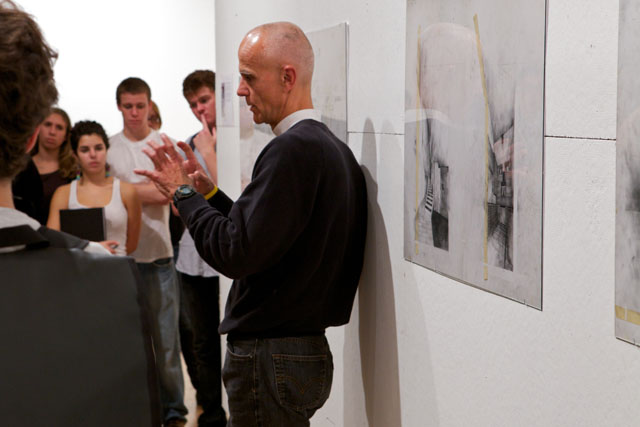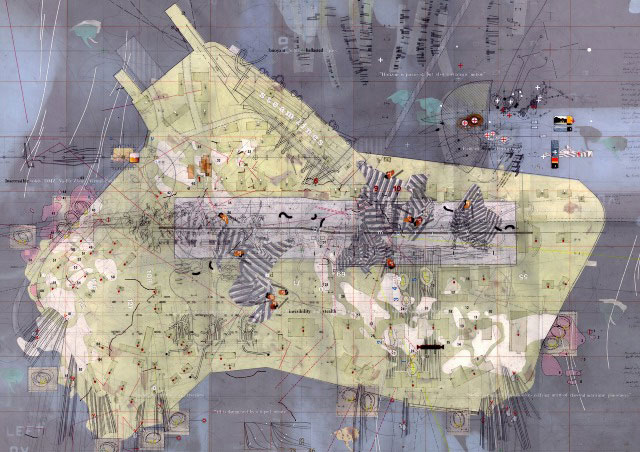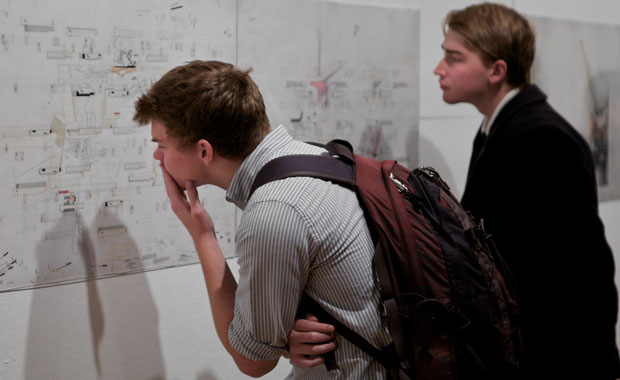Perry Kulper Exhibition (Fall 2010)
Exhibition
Perry Kulper: ‘Rare Breeds + Extinct Species’
Opening Reception: Wednesday, Oct. 6, 2010, 6 pm
Location: Green Gallery, School of Architecture (2nd floor)

Biography: Perry Kulper is an architect and Associate Professor of Architecture at the University of Michigan. Prior to his arrival at the University of Michigan he was a member of the faculty at SCI-Arc for 17 years as well as in visiting positions at the University of Pennsylvania and Arizona State University. Subsequent to his studies at California Polytechnic State University, San Luis Obispo and Columbia University he worked in the offices of Eisenman/ Robertson, Robert A.M. Stern and Venturi, Rauch and Scott Brown before moving to Los Angeles. His interests include the roles of representation and methodologies in the production of architecture and in broadening the conceptual range by which architecture contributes to our cultural imagination.
Perry Kulper’s Imaginarium AS Darwin’s Omission
The difficulty of the creation of an imaginary world is not the demands of an integrated overall structure of appearances. Nor is it in the conjuring act of a foundational synthetic smooth space of an imaginary world. The difficult challenge of world-making is always in the more subtle tissue of the minor slips, distortions, elisions, and unobserved disappearances that are commonplace in the everyday world. To make a substitute world that exceeds the domain of the real, one must focus on the figuration of such diverse liminal phenomena and minimal differences that give a signature grain or texture to the imaginary. In short, the power of the imaginarium is in direct relation to the presence of its contaminations.
The medium of Perry Kulper’s Imaginarium is plural, figures and fields are layered unevenly, thoughts registered as gestures superimposed inside and between micro-domains, and the occasional presence of grids, repetitions, and structures that quickly fade like shadows under clouds. If we contrast these techniques of emergence within this Imaginarium with the easier precision of the modernist smooth space of photomontage, we can note the importance of the deviations and mutations within these weak structures. The slight exceptions can be read as the movement from repetition to difference beneath the surface of appearances, as if guided by some barely legible undertow. Why does the series fade or bifurcate, stop or wander? What unseen force is propelling repetition into difference?

The photomontage synthesizes a priori image-matter into a fixed tableau whose tension is maintained through the presence of seam of the fragment superimposed on the seam of the adjoining fragment, as if fixed in the force of a magnetic field. The photomontage is an admixture of the familiar posed as the unfamiliar, the old configured as new, whereas Kulper’s Imaginarium shifts these formulas to reduce the misrecognition that sparks the uncanny, but these works maintain the contamination of the imaginary by other subtle subconsious traces (as identified by Freud and later Derrida).
Perry Kulper’s work resists the construction logic of flattened photomontage with a thick surface of woven imagery. His work is a radically different synthetic operation than assemblage – his works are drawn in a mixed language hybridizing the two traits of analytical drawing & descriptive geometry with the distinctly separate traits of episodic vignettes & nonchalant doodling into a new species of visionary architecture, which when drawn appear like episodes from a single vast mechanized daydream.
These hybrids are done in the manner of architectural drawing, but their impurities and exceptions are foundational. These works, subtle dislocations, incomplete thoughts, imperfect moments are made to function as resistance to the fixation of regular figuration, and offer a thick space of possibilities of growth are multiple. Intricacy of the irregular interruptions performs not as erring, but as identity. These drawings are speciated, they are hybridized and appear to evolve along irrational lines of force. The role of speciation in Kulper’s work is certainly reflective of the significance of Darwin’s theories of evolution, which in their lucid arguments explain the diversification of species without knowledge of the necessary secret mechanism of genetics, the real invisible force that drives identity through difference. The greatest omission in Darwin’s theories may not be the missing key of genetics, but the limits of the theory to describe a role for the most powerful force in the development of the higher faculties: curiosity. Darwin’s curiosity is the real origin of his theory, just as he origins of genetics lies in Mendel’s patient observations in his garden. Kulper’s Imaginarium is possibly such a garden of curiosities, in both meanings of the word. Voltaire, in Candide, concludes with this imperative: “you must cultivate your garden,” and we would do well as architect’s to contemplate what wonders, hybrids, and exceptions our curiosity can generate.
///
